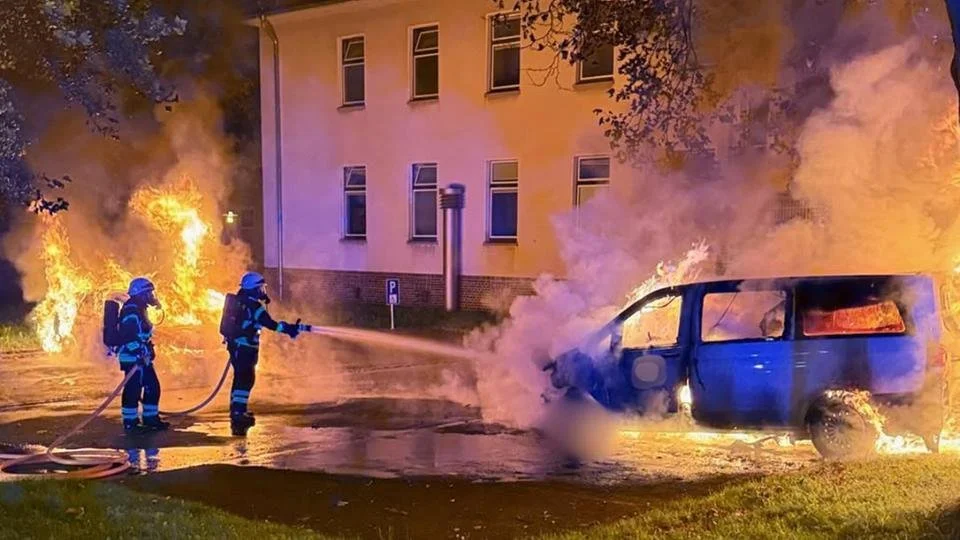Global Surge in Anarchist Arson Campaigns Reveals Critical Soft Target Vulnerability
Executive Summary
Anarchist groups across Europe and North America have escalated arson attacks against police, military, fossil fuel, and state infrastructure. These ideologically motivated acts of sabotage—targeting everything from Bundeswehr vehicles in Germany to ICE facilities in the U.S.—highlight how decentralized movements are exploiting overlooked vulnerabilities in security logistics and critical infrastructure.
Key Judgments
1. Anarchist arson campaigns are increasingly coordinated across borders, linked by a shared anti-authoritarian, anti-capitalist, and anti-militarist ideology.
Evidence: Communiqués from Germany, Canada, the U.S., and Greece echo common grievances—opposition to war preparations, police violence, extractivism, and colonial legacies—despite being localized actions (Dark Nights; MTL Counter-Info; Semper Incolumem).
2. Vehicle and facility arson is favored for its low technical barriers and symbolic power, often requiring minimal resources but delivering maximum disruption.
Evidence: Repeated attacks on unguarded vehicles—ranging from defense contractors like Insitu to police motorcycles and NYPD fleets—demonstrate the tactic’s appeal and replicability (Never Sleep; Semper Incolumem; BC Counter-Info).
3. Critical infrastructure tied to militarism, fossil fuels, and law enforcement is deliberately targeted to undermine public trust and logistical resilience.
Evidence: Attacks have struck Bundeswehr depots, Boeing subsidiaries, ICE field offices, and contractors like McElhanney involved in gas pipeline construction (Semper Incolumem; MTL Counter-Info).
Analysis
The recent escalation of anarchist-led arson attacks marks a shift in the operational posture of anti-authoritarian movements across multiple regions. These actions, dispersed yet ideologically synchronized, target assets that represent state coercion, corporate militarization, and environmental exploitation. Though relatively low in operational complexity, the attacks are tactically effective and strategically resonant within the movements that perpetrate them.
In Kassel, Germany, the sabotage of Bundeswehr vehicles was embedded in a broader rejection of the country’s renewed military posture, denounced as a nationalist project rooted in economic crisis and masculine aggression. In Canada, vehicles belonging to firms involved in gas pipeline construction were set ablaze in what appears to be a sustained anti-extractivist campaign that blends indigenous solidarity with anarchist praxis. In the U.S., attacks against Boeing subsidiaries and ICE-linked facilities frame military-industrial actors and surveillance technologies as legitimate sabotage targets.
A key characteristic of these actions is their careful messaging. While some incidents are immediately claimed through communiqués that frame the events as part of a global anti-capitalist struggle, others are reported through sympathetic channels that connect them to broader ideological goals. The Athens arsons, for example, were explicitly tied to government-linked sex trafficking allegations. In each case, the target is selected not only for its logistical vulnerability but for its symbolic resonance within a larger resistance narrative.
The case of Jakhi McCray in New York further demonstrates the use of individual action to cultivate collective identity. His act of arson—combined with a highly personalized manifesto—served to articulate a political framework that aligned local rage with global resistance. This is part of a broader strategic communication trend in which small-scale sabotage is amplified through media-savvy storytelling, turning isolated incidents into ideological statements with staying power.
These attacks consistently expose vulnerabilities in low-security, high-value assets such as government vehicles, contractor fleets, and lightly guarded facilities. The damage inflicted is often modest in material terms but disproportionate in psychological and reputational cost—particularly for institutions already facing public criticism or scandal. Whether justified as anti-colonial, anti-police, anti-militarist, or anti-capitalist resistance, the end result is the same: disruption, symbolism, and the erosion of institutional control in physical and narrative space.
The cumulative effect is not chaos but coherence—a patchwork of arsons that, taken together, indicate a maturing doctrine of sabotage built on decentralization, repetition, and ideological clarity. These aren’t random acts of violence. They are part of a calculated method of targeting the soft connective tissue of modern governance and commerce.
Sources
MTL Counter-Info – Gitxsan Development Corporation vehicles burned
Semper Incolumem – Arson attack on Greek police officer’s motorcycle
Semper Incolumem – Greek government vehicles torched amid sex trafficking scandal
Semper Incolumem – Anarchist propaganda highlights McElhanney arsons
Semper Incolumem – NYPD arsonist’s manifesto circulates on anarchist networks


